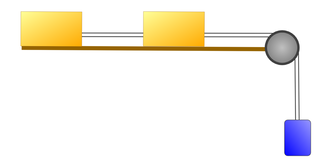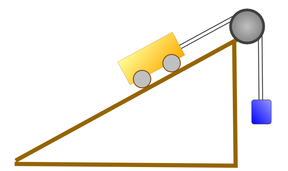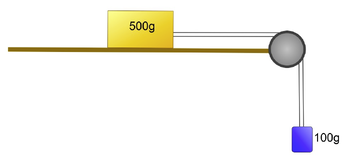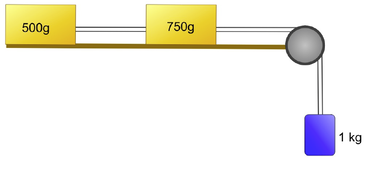A useful context to examine Newton's Second Law, is the use of pulleys. Simple pulleys, where there is only one wheel, simple change the direction of the force.
The following are all examples of situations involving pulleys.
The following are all examples of situations involving pulleys.
|
Theory
If the masses hanging on pulleys are NOT in equilibrium, the system will accelerate. This video will examine accelerating systems and how to solve them. (for the sake of simplicity, friction in the pulleys is deemed to be negligible) |
|
Some problems to try
|
1. Assuming the surface has negligible friction, |
2. Determine the acceleration if μ = 0.15. (3.54 ms-2)





